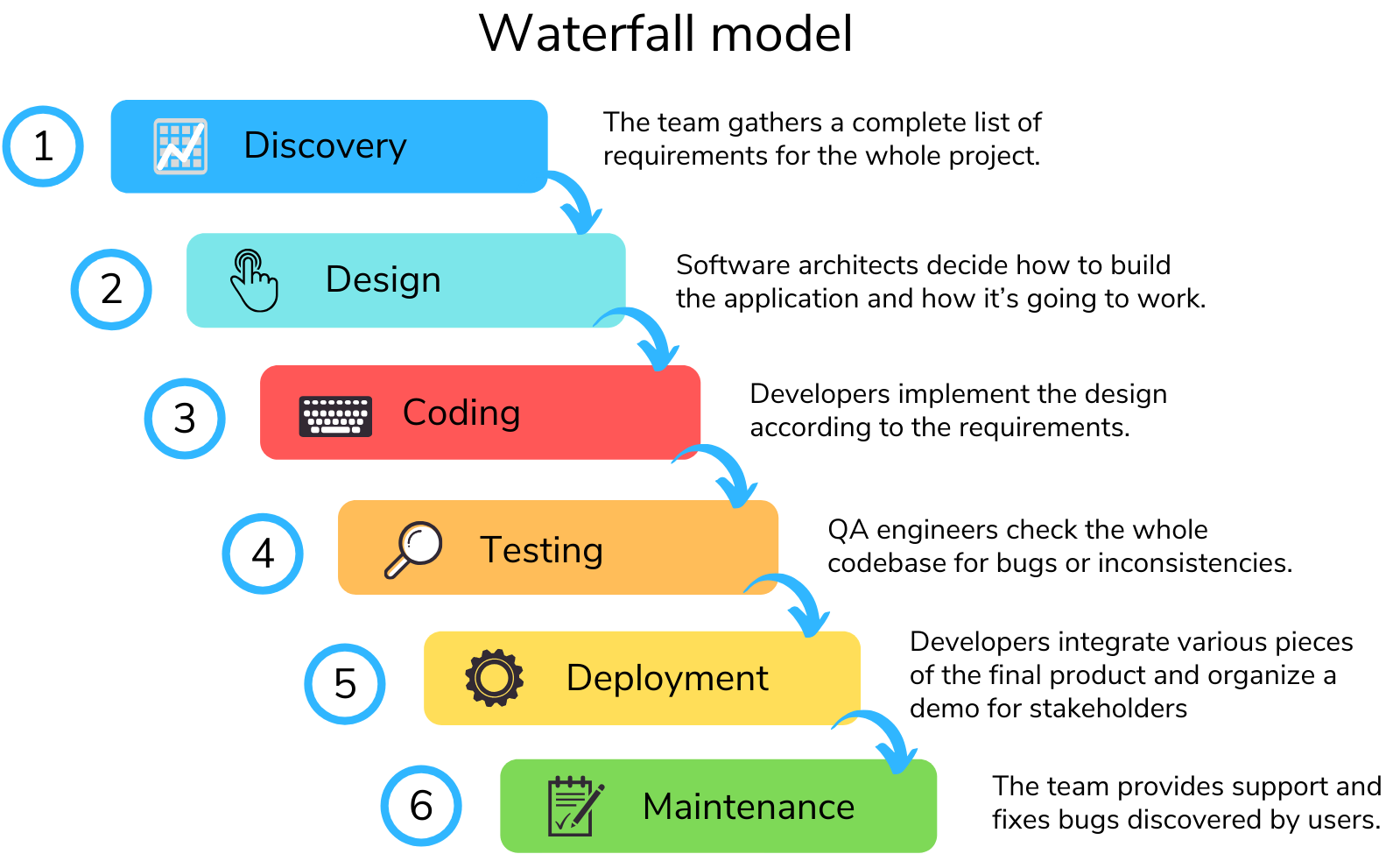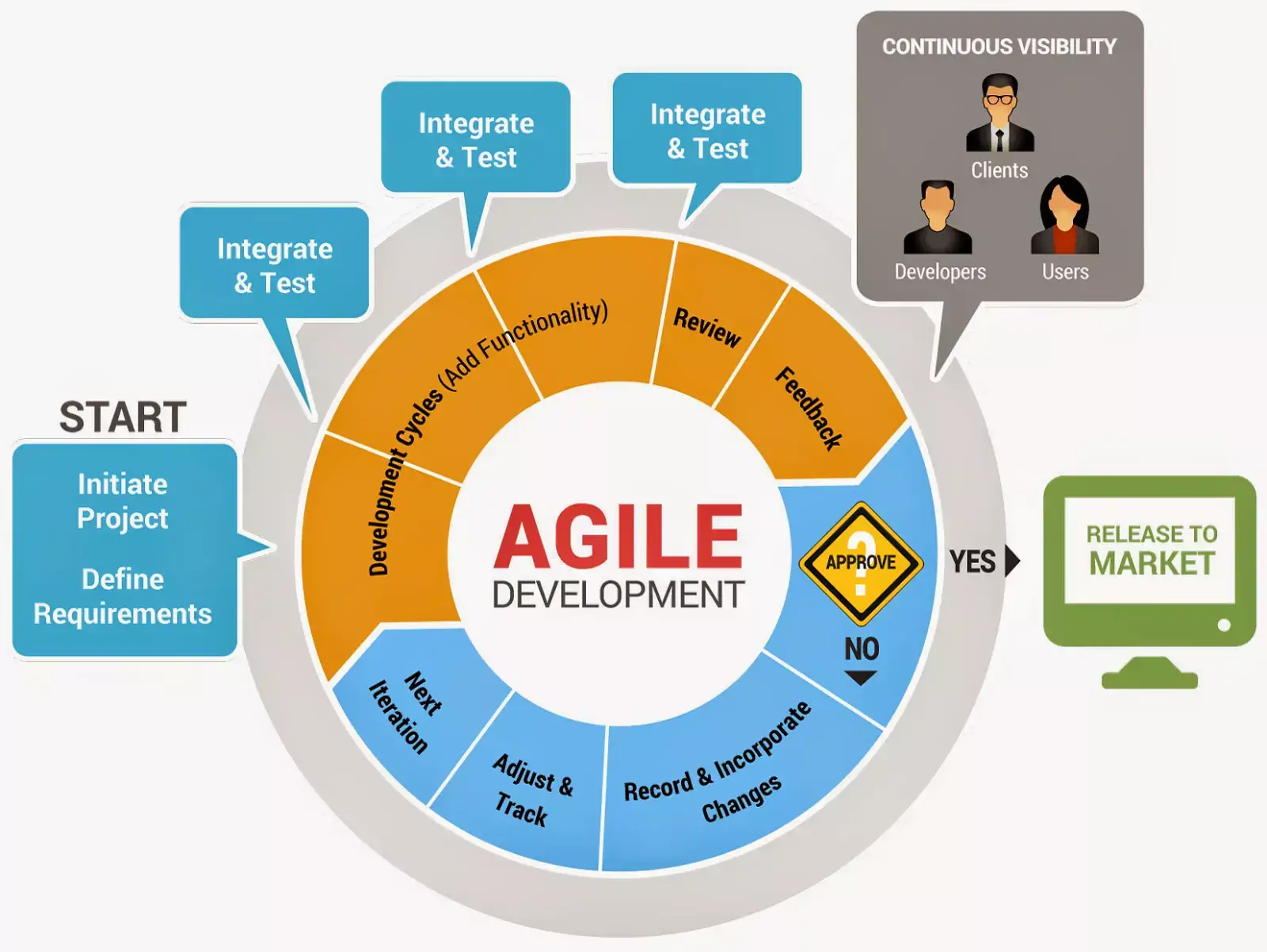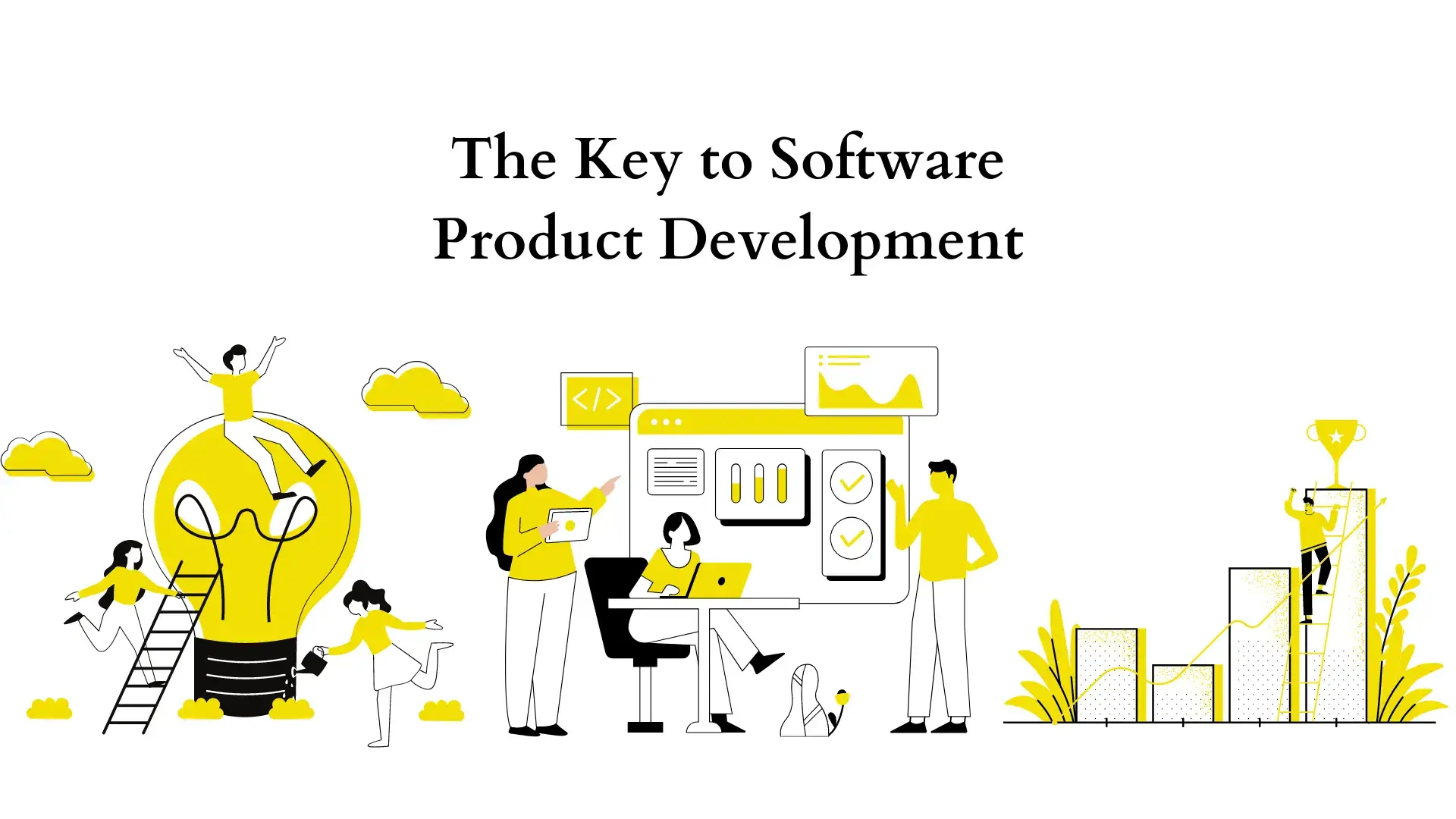Today, software products have become such an integral part of our lives that it’s difficult to envision any of our everyday activities taking place without using some computer-based application or procedure! However, the process becomes much more difficult to modify when producing a solid software product. Almost 14% of software projects fail because they don’t follow proper software product development guidelines regularly. In reality, 75% of business and IT leaders believe their software initiatives will fail. For producing a high-quality software product that satisfies key criteria and overcomes problems, it’s critical to follow a set of systematic processes. Without further a due, let’s get started!
 Project managers and system analysts can use SDLC to design, build, and test high-quality software. It aids in the management of the development process’ scope and the avoidance of developmental difficulties.
Project managers and system analysts can use SDLC to design, build, and test high-quality software. It aids in the management of the development process’ scope and the avoidance of developmental difficulties.
 The waterfall model incorporates several consecutive stages: from conception through maintenance and is one of the early software product development approaches. This approach is excellent for projects that require precise and accurate papers that specify how the system is built since it guarantees that well-defined goals are met. More qualities may be tested, added, and tested again after obtaining consumer input at each level of the product development process. Advantages of Waterfall Model: Using this method makes it possible to departmentalize and regulate each stage of the development process rather than relying on a single person or team. The following are the key drawbacks of the Waterfall Model:
The waterfall model incorporates several consecutive stages: from conception through maintenance and is one of the early software product development approaches. This approach is excellent for projects that require precise and accurate papers that specify how the system is built since it guarantees that well-defined goals are met. More qualities may be tested, added, and tested again after obtaining consumer input at each level of the product development process. Advantages of Waterfall Model: Using this method makes it possible to departmentalize and regulate each stage of the development process rather than relying on a single person or team. The following are the key drawbacks of the Waterfall Model:
 Agile approaches save money while ensuring quality. Every few weeks, new upgrades and releases of the software product are available to clients through agile approaches. More qualities may be tested, added, and tested again after obtaining consumer input at each level of the product development process. The agile process reduces time and ensures that the final product satisfies the desired specifications. Pros and Cons of the Agile Model Agile approaches have lately gained widespread acceptance in the software industry. This procedure, however, may not be appropriate for all items. Listed below are some of the advantages and disadvantages of the Agile methodology. Advantages:
Agile approaches save money while ensuring quality. Every few weeks, new upgrades and releases of the software product are available to clients through agile approaches. More qualities may be tested, added, and tested again after obtaining consumer input at each level of the product development process. The agile process reduces time and ensures that the final product satisfies the desired specifications. Pros and Cons of the Agile Model Agile approaches have lately gained widespread acceptance in the software industry. This procedure, however, may not be appropriate for all items. Listed below are some of the advantages and disadvantages of the Agile methodology. Advantages:
What is Software Product Development?
Software product development generates and maintains applications, frameworks, and other software components by conceptualizing, specifying, designing, programming, documenting, testing, and resolving problems. Software development includes developing and maintaining source code, but it also encompasses all activities that lead from the conception of a desired piece of software to its ultimate manifestation, usually in a planned and organized manner.4 Basic Software Types Depending on Your Business Needs
1. Products for System Software
Systems software applications can ease application programming by managing the computer system’s resources. A wide range of software is available, including operating systems, databases, networking software, translators, and software utilities.2. Software Programming Products
Software developers use programming tools such as compilers, text editors, debuggers, and linkers to create, debug, and maintain other programs and apps.3. Software for Applications
An application or product that is utilized to accomplish tasks is application software. Applications such as data management software, Office suites, media players, and other applications are widely used.4. Products for Embedded Software
Embedded System Software controls equipment and devices via telecommunications networks, industrial robots, automobiles, and other gadgets.How is Software Product Development carried out?
Typically, a software company uses the Software Development Life Cycle (SDLC) to produce its software projects. Software developers can design a functional business system by following the SDLC to the letter. Project managers and system analysts can use SDLC to design, build, and test high-quality software. It aids in the management of the development process’ scope and the avoidance of developmental difficulties.
Project managers and system analysts can use SDLC to design, build, and test high-quality software. It aids in the management of the development process’ scope and the avoidance of developmental difficulties.
The steps of a typical Software Development Life Cycle are as follows:
Stage 1: Planning and Analysis of Requirements Requirement analysis is the most critical and fundamental level of the SDLC. This process is done by the team’s top members, with input from the customer, the sales department, and industry domain experts. This data is then utilized to establish the main project approach and conduct product feasibility studies in economics, operations, and technology. It is vital to determine the project’s quality assurance requirements and identify its risks during the planning phase. The purpose of a technical feasibility study is to identify the many specialized techniques used to implement the project with the least risk. Stage 2: Defining Specifications Following the requirement analysis, the product requirements must be well defined and documented before being authorized by the customer or market analysts. This process is accomplished using an SRS (Software Requirement Specification) document containing all of the product requirements established and produced throughout the project life cycle. Stage 3: Designing the Product Architecture SRS is the go-to resource for creating the optimal architecture for a new product for product architects. Typically, many design approaches for the product architecture are presented and documented in a DDS – Design Document Specification based on the criteria given in the SRS. All essential stakeholders evaluate this DDS, and the optimal design strategy for the product is chosen based on many characteristics such as risk assessment, product robustness, design modularity, budget, and time restrictions. The design approach describes the product architecture and how it communicates and interacts with third-party and external modules (if any). DDS should be used to document every aspect of the architecture’s internal design, down to the tiniest detail. Stage 4: The building or developing the Product At this level of the SDLC, the real development of the product begins. Here, the DDS code is generated. Code generation may be done quickly and easily if the design is precise and structured. Compilers, interpreters, and debuggers are tools used by programmers to develop code, and developers must adhere to their organization’s coding standards. The code is written in various high-level programming languages, including C, C++, Pascal, Java, and PHP. The language used is determined by the type of software being developed. Stage 5: Product Evaluation Current SDLC models include testing operations in all phases, frequently a subset of all stages. Product evaluation is an important stage that relates to how the product is tested, which includes reporting and monitoring flaws, repairing them, and retesting the product until it meets the quality criteria of SRS. Stage 6: In-Market Deployment and Maintenance Once thoroughly tested, the product is formally released in the relevant market and is ready for deployment. Product rollout is sometimes done in stages, depending on the company’s business plan. The product might be introduced in a limited market and first tested in a real-world setting (UAT- User Acceptance Testing). Depending on the feedback, the product may be released or proposed enhancements in the intended market group.What is the importance of Software Product Development?
As businesses develop, the same software systems or operations that worked well initially may become incompatible. As a result, software product development is critical to an organization’s ability to meet demand and flourish. Software product development is also advantageous in the following ways:- Makes your business processes more efficient
- Provides a One-of-a-Kind Solution
- Provides a competitive advantage
- A highly adaptable custom software product
Methodologies for Developing Software Products
Various software product development approaches are available today, each with its own set of benefits, ranging from reduced risk to increased process efficiency and continuous iterations to increased scalability. To identify which one best suits you the best, take a look at the four most common software product development approaches — View, Waterfall, Agile, Scrum, Incremental, and Iterative. View Model A view model provides perspectives on the system and its surroundings for software development. The goal of perspectives and views is to let human engineers understand extremely complicated systems. Viewpoints in the engineering of physically demanding systems frequently correspond to talents and responsibilities within the engineering organization. The idea of a perspective framework is to incorporate distinct points of view within the definition of a given complicated system. Each point of view satisfies an audience interested in a certain system component. Each viewpoint is associated with a viewpoint language that optimizes the vocabulary and presentation for the audience of that viewpoint. Waterfall Model The waterfall model incorporates several consecutive stages: from conception through maintenance and is one of the early software product development approaches. This approach is excellent for projects that require precise and accurate papers that specify how the system is built since it guarantees that well-defined goals are met. More qualities may be tested, added, and tested again after obtaining consumer input at each level of the product development process. Advantages of Waterfall Model: Using this method makes it possible to departmentalize and regulate each stage of the development process rather than relying on a single person or team. The following are the key drawbacks of the Waterfall Model:
The waterfall model incorporates several consecutive stages: from conception through maintenance and is one of the early software product development approaches. This approach is excellent for projects that require precise and accurate papers that specify how the system is built since it guarantees that well-defined goals are met. More qualities may be tested, added, and tested again after obtaining consumer input at each level of the product development process. Advantages of Waterfall Model: Using this method makes it possible to departmentalize and regulate each stage of the development process rather than relying on a single person or team. The following are the key drawbacks of the Waterfall Model:
- Simple to comprehend and apply
- Because of the model’s rigidity, it is simple to manage. There are different deliverables and review mechanisms for each phase.
- Each phase is completed one by one.
- Works effectively for smaller projects with well-defined criteria.
- Stages are well defined.
- Milestones that are well understood.
- Tasks are simple to organize.
- All steps and results are meticulously documented.
- Until late in the life cycle, no functioning software is developed.
- There is a lot of danger and uncertainty.
- Not an appropriate approach for complex, object-oriented programs.
- Poor model for long-term projects.
- Projects with moderate to high risk of changing requirements are not suitable. As a result, the risk and uncertainty associated with this process model are significant.
- Measuring development within phases is tough.
- Changes in requirements cannot be accommodated.
- Changing a project’s scope during its life cycle might fail.
- Integration occurs as a “big bang” in the end, making it impossible to uncover any technological or business bottlenecks or issues early on.
 Agile approaches save money while ensuring quality. Every few weeks, new upgrades and releases of the software product are available to clients through agile approaches. More qualities may be tested, added, and tested again after obtaining consumer input at each level of the product development process. The agile process reduces time and ensures that the final product satisfies the desired specifications. Pros and Cons of the Agile Model Agile approaches have lately gained widespread acceptance in the software industry. This procedure, however, may not be appropriate for all items. Listed below are some of the advantages and disadvantages of the Agile methodology. Advantages:
Agile approaches save money while ensuring quality. Every few weeks, new upgrades and releases of the software product are available to clients through agile approaches. More qualities may be tested, added, and tested again after obtaining consumer input at each level of the product development process. The agile process reduces time and ensures that the final product satisfies the desired specifications. Pros and Cons of the Agile Model Agile approaches have lately gained widespread acceptance in the software industry. This procedure, however, may not be appropriate for all items. Listed below are some of the advantages and disadvantages of the Agile methodology. Advantages:
- It is a practical approach to software development.
- Encourages collaboration and cross-training.
- Functionality can be quickly built and shown.
- The required resources are little.
- Suitable for fixed or fluctuating needs
- Provides partly workable solutions as soon as possible.
- A good model for surroundings that change regularly.
- There are few regulations, and documentation is simple to implement.
- Allows for concurrent development and delivery within a larger planned framework.
- There is little to no preparation necessary.
- Simple to use.
- Allows developers to be more creative.
- Not appropriate for dealing with intricate dependencies.
- There is a greater danger of sustainability, maintainability, and extensibility.
- It will not work unless there is an overarching plan, an agile leader, and agile PM practices.
- Strict delivery management mandates the project’s scope, the functionality to be supplied, and the revisions needed to fulfill the deadlines.
- Depends greatly on client engagement; thus, the team is led astray if the customer is unclear.
- Because there is little documentation developed, there is a high level of individual reliance.
- Due to a lack of documentation, transferring technology to new team members may be difficult.
- Scrum may help teams complete project deliverables more quickly and effectively.
- Resources like time and money are spent wisely.
- Rather than tackling large projects in one go, large projects are broken up into smaller, more manageable sprints.
- During the sprint review, new features are coded and tested.
- It’s ideal for quick-paced development tasks.
- Scrum meetings provide the team with clear visibility.
- Scrum involves input from customers and stakeholders since it is agile.
- Short sprints make it much easier to make adjustments as per feedback.
- The lack of a defined end-date in Scrum makes scope creep common.
- There’s a chance that the project could fail if they aren’t devoted or cooperative.
- Adopting the Scrum framework in a large team might be challenging.
- Experienced team members can only use the framework.
- It may have a big negative impact when a team member leaves in the middle of a project.
- Quality will be tough to accomplish if the team does not go through a thorough testing method.
How may the software development process be sped up?
During the software development process, the team devotes more effort to identifying and correcting mistakes. As a result, the development team analyses the following principles and speeds up the development process to reduce the possibility of having errors and addressing them.Management Systems for the SDLC
When a development team is working on a complicated program, there is a potential that tracking the development process may be challenging. As a result, SDLC management solutions may assist the team in avoiding hazards. These technologies aid task management, analytics, and bug tracking.Ongoing Integration
Continuous Integration ensures that the software remains operational. It streamlines the development process by eliminating the time-consuming chores of developing and integrating code. Errors will trigger alarms from the continuous integration tool.Controlling the source
As a central source of code, every software development team must use control repositories. The source control can ensure that all work is saved in one location.Conclusion
With companies spending time and money on new technologies, the significance of the software product development process is undeniable. Following a predefined software product development process improves project execution and code development. The fundamental process links system requirements to business requirements and produces a common and suitable solution for most enterprises. Choosing the proper model that works best for your organization, on the other hand, will set your company on the route to success!Abhinav Sathyamurthy is a professional blogger with over six years of experience covering technical topics such as blockchain, ERP, AI, and other matters.


